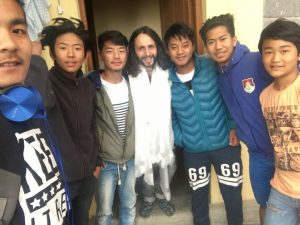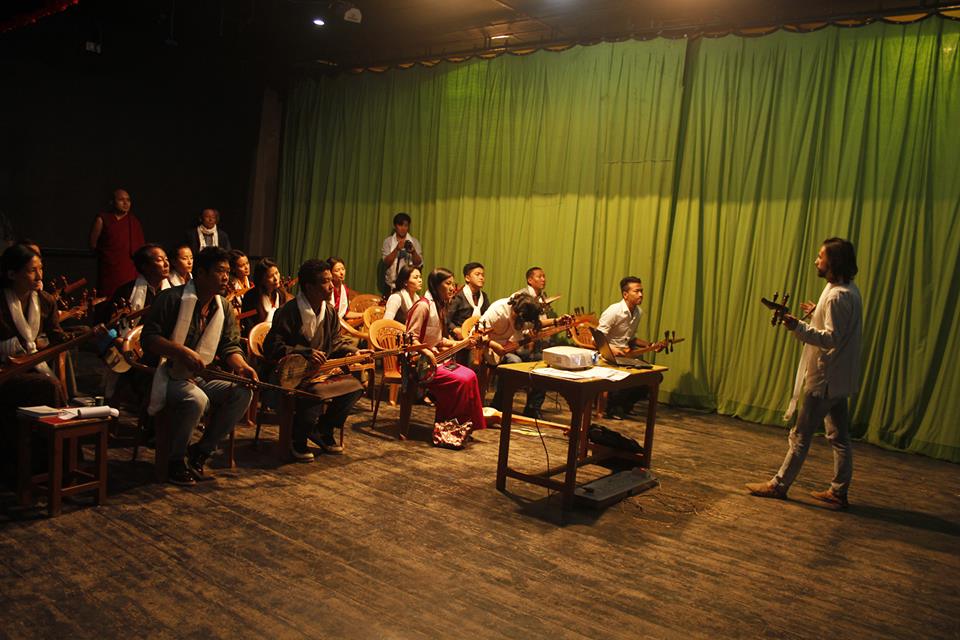At their latest tour of south India, the Ah Ka Ma band of the Tibetan Institute of Performing Arts gave a wonderful concert, especially because the students were playing every instrument live. The guitar players who have never touched a guitar before joining the institute played like professionals. All this was possible because the guitarists and other instrument players were trained for six months by Zdravko Bozic, or “Zee” as he was fondly called, a trained musician from Slovenia.
Following is an interview with Zdravko Bozic – who shares his experience with the Tibetan culture and working at TIPA.
How did you first come to know about Tibet?
The first time I had any significant contact with the Tibetan people and culture was in Leh, Laddakh. There I studied a course in Tibetan medicine, met friendly people and was surprised that this vast cultural heritage existed completely unknown to me.
You worked at the TIPA in the past and taught western music to the students. How would you describe your experience?
Yes, we worked together at the TIPA to establish a foundation for modern popular music performance and education. Another major objective was to integrate mainly the dranyen into the western musical system. The students were very successful in learning new instruments and a complete basic musical system, to the point where they created music and performed, using western music theory and notation.
The experience was altogether positive and fullfilling. It was also an interesting learning experience personally. The people were very kind and hospitable.
Of all the Tibetan instruments, which one is the most interesting for you and why?
It would have to be the Tibetan guitar – dranyen. It’s interesting because the sound belongs, at least in my mind, exactly where Tibet is geographically. Between the west asian arabic instruments, east asian melodic instruments, combined with instruments of northern asian nomadic peoples. It can be played in different styles and it still projects the place of origin very easily, in my opinion.
TIPA has been set up by His Holiness the Dalai Lama in 1959 with an aim to preserve the Tibetan performing culture. How successful have the Tibetans been in fulfilling the objectives of TIPA?
Very much so, I believe. There is continuous research of dances and songs, transmission of knowledge and distribution of material. It is difficult to preserve a cultural heritage outside it’s land of origin. Furthermore, the minds of young people are increasingly occupied by global and other local cultural influences. Therefore, I believe that a focus on promoting and integrating the Tibetan culture into the contemporary environment, besides preserving it in pure form, would make it more relevant and consequently expand.

How popular is the Tibetan performing arts among the people of your country? Do you think any collaboration with TIPA to hold a concert in our country is going to help promote the Tibetan performing culture and its heritage?
The population of Slovenia is largely unaware of Tibetan culture, as was I, until experiencing it directly. I do think a concert in Slovenia would help promote Tibetan performing culture, maybe in one of the coming TIPA world tours.










